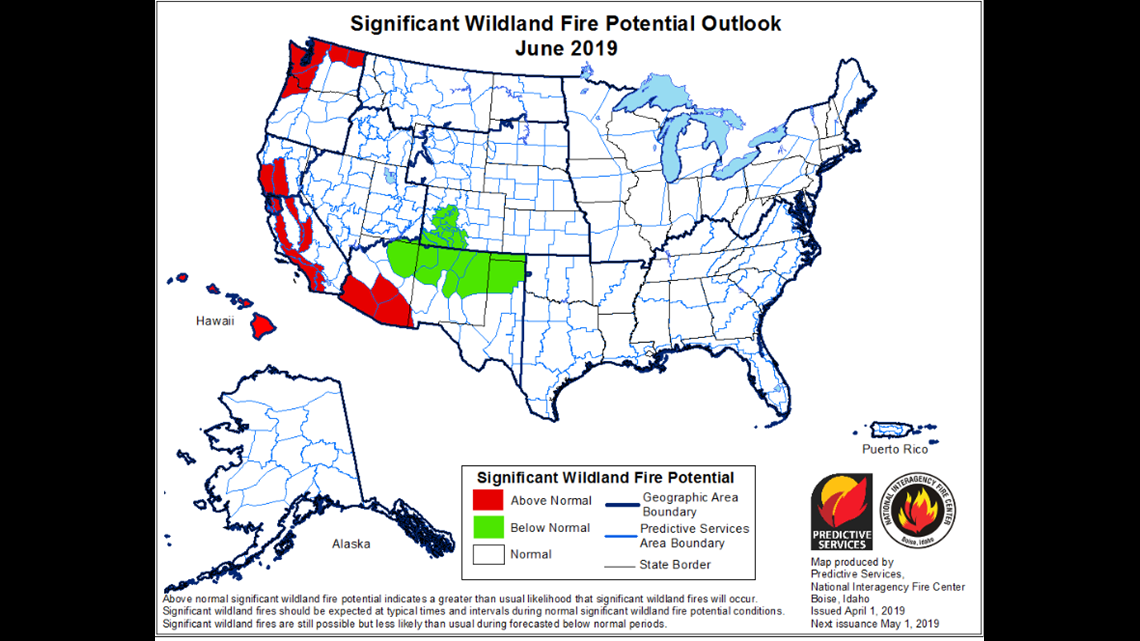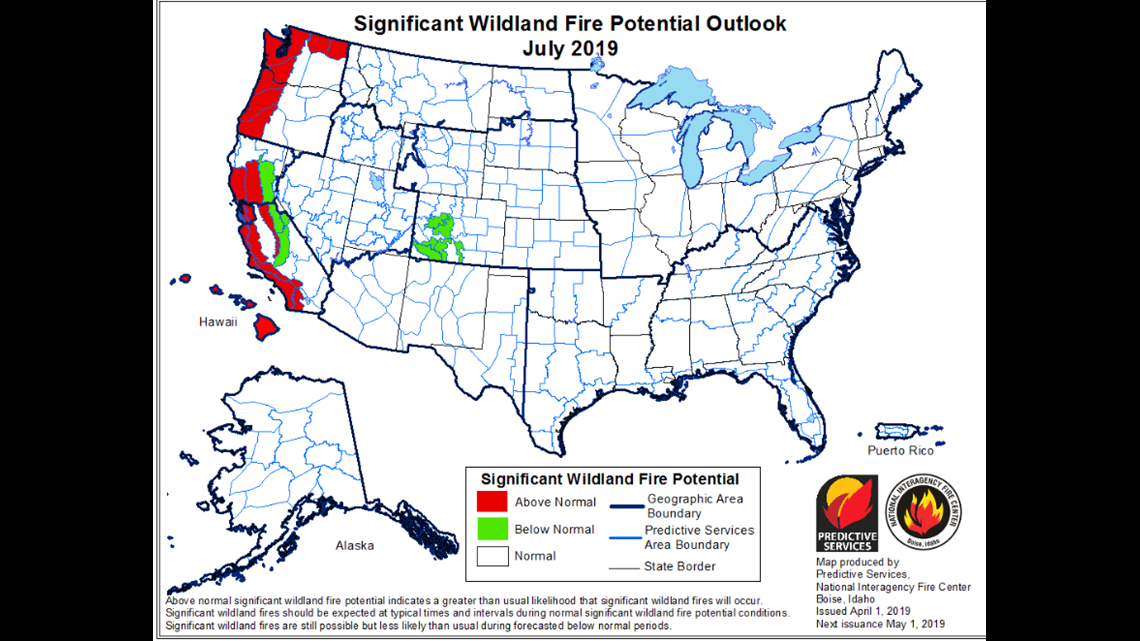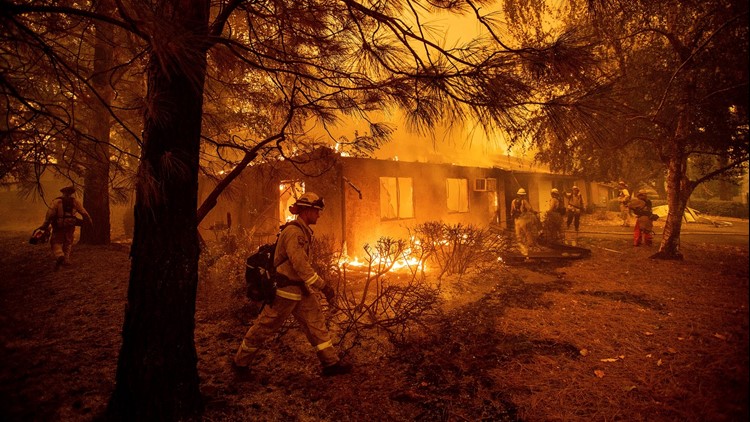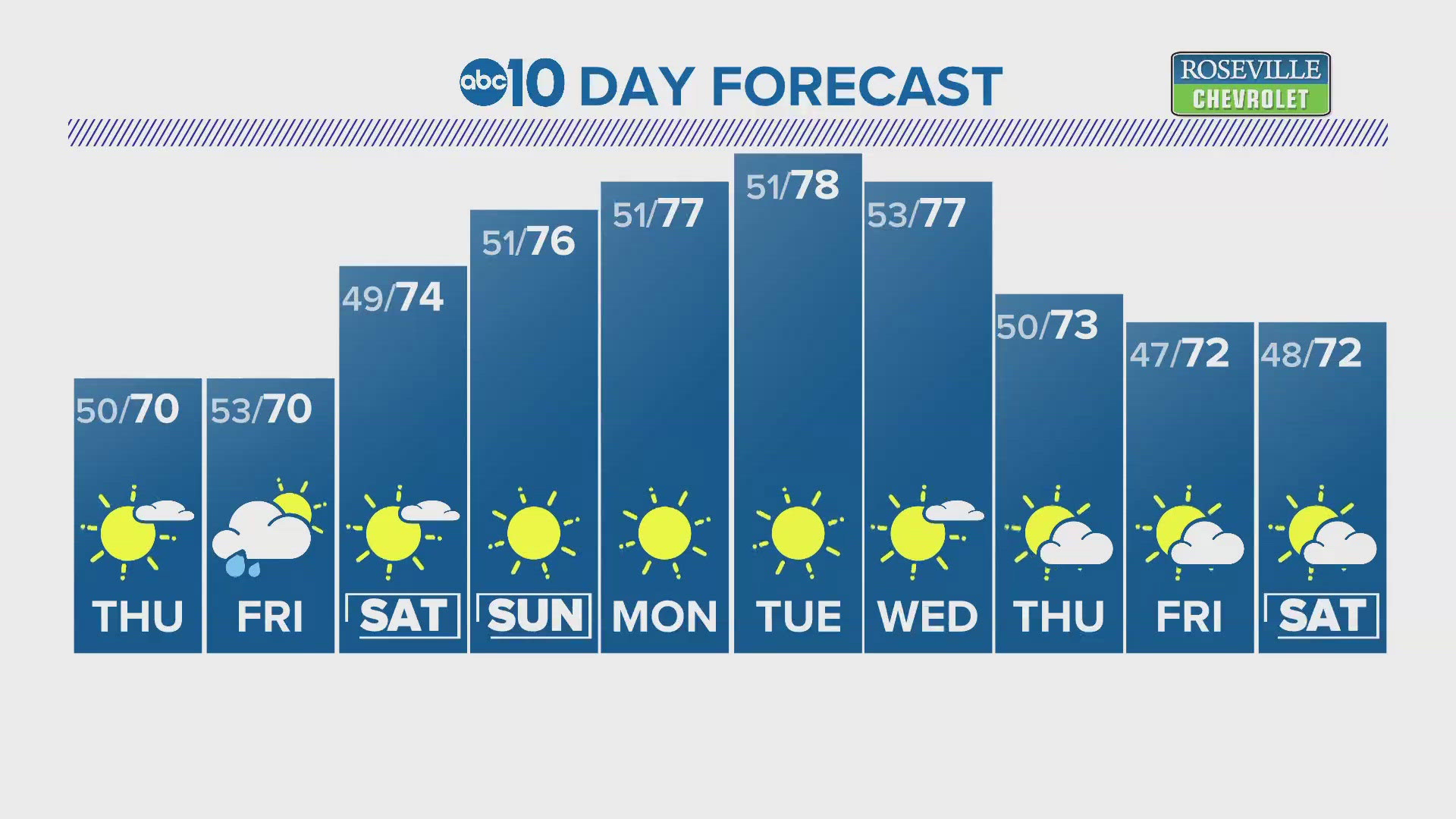Summer is just a few months away and wildfire season is at the top of everyone's mind. And for good reason, last year was the deadliest wildfire season ever in California state history.
As we move closer to the hot summer months, the Bureau of Land Management releases a wildfire outlook forecast for CALFIRE based on predictive modeling. This month’s findings highlight which areas of the state have "above normal" significant fire potential for the months of June and July.
WHAT TO EXPECT:
- May - Normal Significant Fire Potential for the Central Valley
- June - Above Normal Significant Fire Potential for the Northern Sacramento Valley
- July - Above Normal Significant Fire Potential for the Northern Sacramento Valley
Here’s the takeaway: Thanks to an amazing winter season full of ongoing snowstorms, the snowpack numbers for the beginning of April gave a reading that's 162 percent of average statewide. Keep in mind, as temperatures warm in late April, we're expecting the brush growth to be well above average. That combined with warming temperatures for late May into mid-June will cause a healthy fine fuel crop to dry out and potentially spark a rebirth to our never-ending fire season.
In addition to that, in mid-February parts of the northern Sacramento Valley received a lot of damage to plants and trees because of the heavy snow. Unfortunately, much of this will become the fuel that will increase the likelihood of a huge wildfire event. For this reason, much of the northern Sacramento Valley has an above normal risk for huge fire potential for the months of June and July.


For the higher elevations, it’s a different story as they’re expected to fair quite well during the early summer months. What’s the difference? Well, you can thank the above average snowpack.
For June, higher elevations have a normal expectation for significant fire growth.
In July, when most areas see an increase in large fire activity, the northern Sierra has below normal significant fire potential, thanks to a slow melting snowpack.
The rest of the Central Valley has normal significant fire potential in June and July.


The next report from the Bureau of Land Management is due out May 1, 2019.
Continue the conversation with Tracy on Facebook.
________________________________________________________________
WATCH ALSO: RAW: Massive amounts of snow on Foresthill roads



